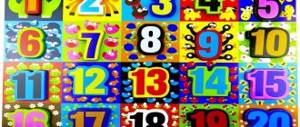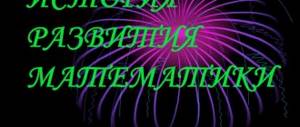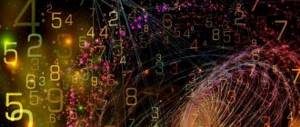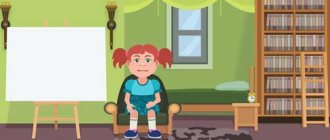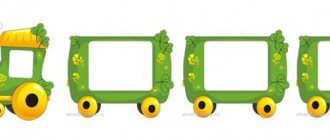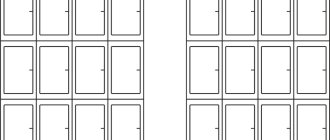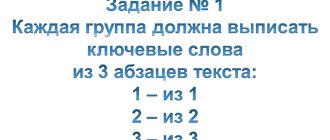Mental counting has existed as long as humanity has existed. At different times, quick counting played a big role in the development of not only people, but all of humanity. Now science has advanced so far that powerful computers are used for calculations, and a person is simply not able to do as many calculations as is necessary to just run the Large Hadron Collider or an ordinary smartphone.
But even now, when computer systems keep accounting records for millions of companies and automate all complex and routine operations at enterprises, factories, airports and even in stores, quick counting has not lost and will not lose its relevance.
- Mental arithmetic lessons
- Courses for the development of mental arithmetic
- Oral calculation for the Unified State Exam and State Examination
- Games for developing mental arithmetic
Examples of exercises for mental counting
Fruit mathematics
- Develops attention span.
- Improves logic.
The Fruit Math game will help you improve your thinking. The essence of the game is that in the picture presented to you, you will need to choose the answer “yes” or “no” to the question “are there 5 identical fruits?” Follow your goal, and this game will help you with this.
Play now
Numerical coverage
- Develops memory capacity.
- Improves semantic memory.
You need to remember the numbers and reproduce them in the correct order. You can use the keyboard.
Play now
Mental numeracy skills
Mental arithmetic skills vary, and before moving on, please answer a few questions:
- Do you want to learn how to quickly count in your head?
- For what purpose do you want to learn how to count quickly ?
- How often do you use a calculator?
- Do you always feel comfortable using a calculator?
- How much time do you spend finding it or running it on your phone/computer?
- Would you learn to count quickly for your intellectual development?
- Do you want to quickly count your change in a store ?
- Do you often need to perform complex mathematical operations?
- Don't you want to strain every time to count something in your head?
- Are you interested in comprehensive or highly specialized development of intelligence?
- Do you want to become a genius or just expand your horizons?

These were questions to think about. They help not only to involve you in the process, but also to show alternative options when quick counting skills are very necessary. Think, perhaps you will find other advantages, what other benefits this mathematical skill can bring.
If you answered “Yes” to at least one of the questions, then I hope that you will learn to do better mental math.
Gauss and mental arithmetic
Carl Friedrich Gauss
One of the mathematicians with phenomenal mental arithmetic speed was the famous Carl Friedrich Gauss (1777-1855). Yes, yes, the same Gauss who invented the normal distribution.
In his own words, he learned to count before he spoke. When Gauss was 3 years old, the boy looked at his father's payroll and declared, "The calculations are wrong." After the adults double-checked everything, it turned out that little Gauss was right.
Subsequently, this mathematician reached considerable heights, and his works are still actively used in theoretical and applied sciences. Until his death, Gauss performed most of his calculations in his head.
Here we will not engage in complex calculations, but will start with the simplest.
Mental arithmetic lessons
To learn how to count quickly in your head, you will need to train your brain every day. Do mental counting exercises for 15-30 minutes a day. Already in the first days you will notice the result; most achieve success already in the first lesson.
I remember it was the same for me, when I had not considered anything for a long time and decided to see what was left of my former abilities. At first I counted very slowly, but then I got faster and faster.. At the first lesson, I began to quickly add almost all three-digit numbers. Memory development plays a very important role in the counting process. The better the memory is developed, the faster the most frequent combinations are remembered.
As a result, the brain remembers different options and produces results faster. Therefore, the counting then proceeds more from memory than from calculations. To calculate complex actions, the results of simpler ones can be taken from memory.
Sign up for our course Accelerating mental arithmetic, NOT mental arithmetic
Sign up for a courseRead more
Mental arithmetic lessons online
- Quick count
- Quick addition
- Quick Add - Reload
- Numerical coverage
Use mental counting techniques for 15-20 minutes a day, you will feel the results already in the first lessons. Soon there will be interesting simulators for mental counting that teach this art in a playful way.
Multiplying numbers in your head
Multiplication is the repetition of a number over and over again. If you need to multiply 8 by 4 , this means that the number 8 needs to be repeated 4 times.
8*4=8+8+8+8=32
Since all complex problems are reduced to simpler ones, you need to be able to multiply all single-digit numbers. There is an excellent tool for this - the multiplication table . If you do not know this table by heart, then we strongly recommend that you learn it first and only then start practicing mental counting. Besides, there is essentially nothing to learn there.
Multiplication table
Multiplying multi-digit numbers by single-digit numbers
First, practice multiplying multi-digit numbers by single-digit numbers. Let's say you need to multiply 528 by 6 . We break the number 528 into digits and go from the oldest to the youngest. First we multiply and then add the results.
528=500+20+8
528*6=500*6+20*6+8*6=3000+120+48=3168
By the way! For our readers there is now a 10% discount on any type of work
Multiplying two-digit numbers
There is nothing complicated here either, only the load on short-term memory is a little greater.
Let's multiply 28 and 32 . To do this, we reduce the entire operation to multiplication by single-digit numbers. Let's imagine 32 as 30+2
28*32=28*30+28*2=20*30+8*30+20*2+8*2=600+240+40+16=896
One more example. Let's multiply 79 by 57 . This means that you need to take the number “79” 57 times. Let's break the whole operation into stages. First, multiply 79 by 50 , and then 79 by 7 .
- 79*50=(70+9)*50=3500+450=3950
- 79*7=(70+9)*7=490+63=553
- 3950+553=4503
Multiplying by 11
Here's a quick mental arithmetic trick that will help you multiply any two-digit number by 11 with phenomenal speed.
To multiply a two-digit number by 11 , add two digits of the number to each other, and enter the resulting amount between the digits of the original number. The resulting three-digit number is the result of multiplying the original number by 11 .
Let's check and multiply 54 by 11 .
- 5+4=9
- 54*11=594
Take any two-digit number, multiply it by 11 and see for yourself - this trick works!
Squaring
Using another interesting mental counting technique, you can quickly and easily square two-digit numbers. This is especially easy to do with numbers that end in 5.
The result begins with the product of the first digit of a number by the next one in the hierarchy. That is, if this number is denoted by n , then the next number in the hierarchy will be n+1 . The result ends with the square of the last digit, that is, the square of 5 .
Let's check! Let's square the number 75.
- 7*8=56
- 5*5=25
- 75*75=5625
Previously, everyone calculated without calculators
Games for developing mental arithmetic
Have you ever wondered: “ How can you practice counting in an easy and fun way?” ". Most likely yes, because training mental calculation in the traditional way, as is customary at school, is very difficult.
Our brain loves to play, it loves interesting tasks where progress is visible in graphs or points. This is why many scientists have been studying the functioning of the brain over the last century. They found that skills are best developed through play. Play 3-5 games a day, for 2 minutes and you will see the result. The speed of your answers and the points you earn will gradually increase.
Game "Guess the operation"
This is one of the best exercises for practicing counting because you will need to insert the correct mathematical symbols to get the correct result. This exercise will help you develop mental arithmetic , logic and speed of thought. With each correct answer the difficulty increases.
Play now
Game "Mathematical matrices"
“Mathematical matrices” is an excellent exercise for the development of mental arithmetic , which will help develop the mental functioning of the brain, mental arithmetic , quick search for the necessary components, and attentiveness. The essence of the game is that the player has to find a pair from the proposed 16 numbers that will add up to a given number, for example, the picture shows the number “29”, and the desired pair is “5” and “24”.
Play now
Game "Piggy Bank"
I can’t resist recommending to you the game “Piggy Bank” from the same site where you need to register, specify only your E-mail and password. This game will give you fitness for your brain and relaxation for your body. The essence of the game is to indicate 1 of 4 windows in which the amount of coins is the largest. Will you be able to show excellent results? We are waiting for you.
Play now
Game "Mathematical Comparisons"
I present a wonderful game “Mathematical Comparisons”, with which you can relax your body and tense your brain. The screenshot shows an example of this game, in which there will be a question related to the picture, and you will need to answer. Time is limited. How much time will you have to answer?
Play now
Sign up for our course Accelerating mental arithmetic, NOT mental arithmetic
Game "2 back"
To develop mental counting, we recommend the “2 back” exercise. This game helps in the development of mental arithmetic, memory and attention. The screen will show a sequence of numbers that you need to remember, and then compare the number of the last card with the previous one. This exercise trains not only mental arithmetic, but also the brain as a whole. The exercise is available after registration, are you ready? Grow with us.
Play now
Game "Visual Geometry"
“Visual Geometry” - an exercise that will help speed up your train of thought and increase memorability and memory. With each successfully completed level the game becomes more difficult. The game helps develop mental arithmetic. How many levels can you complete?
Play now
In addition to these exercises, there are more than 30 free educational game-simulators that are available immediately after registration.
To gain access to free games, you only need to register and enter your Email and password (or log in using social networks).
How to teach a child to count: a selection of games
Let me remind you that all mathematical games for developing counting skills and getting to know numbers are in the Counting and Number Composition
Games for developing mental counting skills:
- One bead, two beads... The game not only improves mental counting, but also develops logical thinking!
- Verbal Ping Pong. to count quickly and without errors directly depends on whether the child understands the composition of numbers. With the help of this game, the child will quickly understand how much it will be if you add three and two or subtract one from five.
- Oral counting with a ball in hands I throw a ball to Gleb and call any number. He throws the ball back, calling the next number. Mental counting within one becomes very fast!
- Train Ticket A game to improve oral and written counting skills. Our version of the game is designed for young transport enthusiasts. For girls, you can come up with tasks similar in principle, wrapping them in a different, more attractive plot.
Oral calculation for the Unified State Exam and State Examination
Mental arithmetic can also be useful in mathematics exams, including the unified state exam, which is written by all eleventh-grade students. This skill will help you worry less about complex calculations. Break them down into smaller mathematical operations that are easier to calculate in your head.
Mental arithmetic improves not only your computational abilities, but also other mental strategic operations, such as memory, which will allow you to remember any information even faster and better and apply your new abilities not only in exams, but also in your everyday life.
To learn how to count faster and better prepare for the Unified State Exam or State Examination, sign up for the course “Accelerating mental arithmetic, NOT mental arithmetic.” From the course you will not only learn dozens of techniques for simplified and quick multiplication, addition, multiplication, division, and calculating percentages, but you will also practice them in special tasks and educational games! Mental arithmetic also requires a lot of attention and concentration, which are actively trained when solving interesting problems.
Sign up for a courseRead more
Didactic games for mental calculation “Visiting the gnomes” and “Smeshariki” Addition and subtraction of numbers within the first ten (mathematics, 1st grade) “Visiting Umka” “Oral calculations within 100” (grades 1-2) Galkina I .A., MBOU “Vodovatovskaya Secondary School”, Arzamas district, Nizhny Novgorod region
The resource includes three didactic games: “Visiting the Dwarfs”, “Smeshariki”, “Visiting Umka”. These materials can be used as oral arithmetic for frontal work with the whole class when studying, consolidating and updating knowledge on the topics: “Addition and subtraction within 10”, “Composition of numbers within 10”, “Oral techniques for addition and subtraction within 100” ", for individual work at home or in the classroom.
To display the inscriptions correctly, install the fonts (if they have not been installed previously), the data in the “Visiting Umka” folder (start - control panel - fonts). Just drag and drop fonts.
The games "Visiting the Dwarves" and "Smeshariki" use the Drang and Drop macro created by [email protected] . Open the presentation, click the button in the window that appears
Don't disable macros
(Before starting work, you must reduce the security level)
In PowerPoint 2003: after launching PowerPoint, open the menu “Tools - Macro - Security”
and check the box in the
“Average” line in the window that opens.
We save the changes in the presentation, close and open again.
A prompt window now appears when you open a presentation. Select “Do not disable macros”)
After working with the presentation , close it
without saving the changes . Navigation for each game: 1. “Visiting the Dwarves”
The developed manual is intended for mathematics lessons for 1st grade students who study any educational curriculum.
The work uses macros, hyperlinks and triggers.
Slide 1 voiced
On the title page of the manual there is a “Start” button,
by clicking on which you go to
the slide menu
.
The slide menu is divided into blocks with hyperlinks that are set to dwarfs and Snow White.
Grumpy
Gnome invites the children to make a pyramid of stones. This slide uses the Drang and Drop macro. (first click on the stone - drag the stone to the place we need - click a second time, fixing its position)
If a child has difficulty putting together a pyramid, then there is a button on the slide; by clicking on it, an image of the assembled pyramid will open, using which the child will assemble his own pyramid. If the child assembled the pyramid on his own, then to check (self-control), he also clicks on this button to check his result with the sample.
On this slide, you can ask the children to show the largest (small) stone.
Repeat the concepts of “top-bottom”, “right-left”, etc.
3 identical slides are offered for work (to save time). One student worked, so as not to rearrange objects to their original places, just click on the “Forward”
to the next similar slide.
From any slide you can use the “Menu”
return to the slide menu and select another character's tasks.
Simpleton
This slide uses the Drang and Drop macro.
Number series exercises are used here. For example:
— Build a wall of bricks, starting with the smallest (largest) number.
— Arrange bricks with single-digit (two-digit) numbers, etc.
3 identical slides are offered for work (to save time). One student worked, so as not to rearrange objects to their original places, just click on the “Forward”
to the next similar slide.
From any slide you can use the “Menu”
return to the slide menu and select another character's tasks.
Quiet
Tasks for matching quantity and number.
— How many stones are shown in the picture? Show this number. If the answer is incorrect, the circle with the number disappears. If correct, it moves under the picture.
Forward button
switches to the next slide.
From any slide, you can use the “Menu”
to return to the slide menu and select the tasks of another character.
Sneeze
Logic task. It is necessary to arrange the stones in a table so that stones of the same color are not repeated in each line (column).
3 identical slides are offered for work (to save time). One student worked, so as not to rearrange objects to their original places, just click on the “Forward”
to the next similar slide.
From any slide you can use the “Menu”
return to the slide menu and select another character's tasks.
Doc
Gnome and Snow White invite the children to test their geometric powers of observation:
- count how many triangles (quadrangles) are in the figure shown in the figure.
If the answer is correct, the card with the number moves to the gnome. When you click on the word "Check",
The children can clearly see the number of figures (each figure in turn appears in the picture in pale pink). The children can count the figures in unison.
Forward button
switches to the next slide.
From any slide, you can use the “Menu”
to return to the slide menu and select the tasks of another character.
Veselchak
Dwarf Veselchak is looking for gold in the stones. On this slide, students work with numbers within 10.
If the answer is correct, the gnome finds a gold bar, and a number appears in the empty window.
If it is incorrect, there is no gold.
Forward button
switches to the next slide.
From any slide, you can use the “Menu”
to return to the slide menu and select the tasks of another character.
The teacher himself can change the composition of the numbers.
Snow White
The evil witch brought Snow White apples, some of which were poisoned. It is necessary to solve the example correctly so that Snow White does not take the poisoned apple.
If the answer is correct, the apple ends up in Snow White's hand.
If incorrect, the apple turns black. Here you need to click on the poisoned apple again (a hyperlink is installed), a gnome appears who asks the children to try to solve the example again.
Forward button
switches to the next slide.
From any slide, you can use the “Menu”
to return to the slide menu and select the tasks of another character.
If desired, the teacher can change (edit) the examples.
From the slide menu using the “Add to End”
move to the last slide.
Snow White has a drawing in her hands.
By clicking on it, we go to the file with the coloring. Print and color. 2. “Smeshariki”
The developed manual is intended for mathematics lessons for 1st grade students who study in any educational curriculum.
This presentation uses the Drang and Drop macro created by [email protected]
The work uses macros, hyperlinks and triggers.
On the title page of the manual there is a “Start” button,
Clicking on it will take you to the slide menu.
The slide menu is divided into blocks with hyperlinks that are customized to cartoon characters:
— Losyash;
- Hedgehog;
— Sovunya;
— Krosh;
— Kopatych;
- Barash.
Slides with Losyash and Hedgehog
are intended for practicing the sequence of numbers within 10, ordinal counting, determining the next and previous numbers and the neighbors of the presented number.
Working with these slides
Examples of tasks:
- Arrange the stars (balls) from 1 to 10.
- Arrange the numbers in increasing (decreasing) order.
- On the slide with the Hedgehog, the teacher places numbers with gaps and asks the children to fill in the missing numbers
- Show a star (ball) with the number 2, 10, ...
- Arrange only even (odd) numbers, etc.
The person doing the work clicks on the object for the first time and moves it to the intended location, then clicks again, thereby stopping the movement of the object.
Working with slides with Sovunya is similar. Here, knowledge of the composition of numbers within 10 is practiced . Examples of tasks:
- The teacher places a card with a number on the left side of the table, the composition of which is being studied (reinforced). For example, 5. At the introductory stage, he demonstrates the composition of the number 5 using number cards, which he inserts (drags) into the table.
- When practicing knowledge of the composition of numbers, you can offer a task to fill in the blanks.
If the child finds it difficult to name the composition of a given number, then a slide assistant will come to the rescue with the composition of numbers within 10. You need to press the red button.
Working with slides (solving examples)
Barash gives Nyusha flowers.
If the answer is correct, Nyusha “puts” the flower in the vase.
The wrong answer is swaying the flower.
Krosh takes a photo of Nyusha.
If the example is solved correctly, Nyusha receives her photo.
Incorrect answer - the photo did not work. Working with slides with Kopatych
Solving examples with “windows”.
If the answer is correct, Kopatych waters the flower.
Incorrect answer - the flowers dry up (decreases).
Working with slides with Barash
If the problem is solved correctly, Barash catches a butterfly with a net.
Wrong answer - the butterfly flies away. There are two buttons on the slides of each group - “Forward” and “Menu”. It is not necessary to complete all tasks of one group to the end. From any slide you can go to the menu to perform other tasks.
For the groups “Losyash”, “Hedgehog”, “Sovunya”, 4 identical slides are offered. Having completed the task on these slides, you do not need to drag stars, balls, cards with numbers to their original places (saving time), you just need to go to the next slide.
After working with the presentation , close it
without saving the changes . 3. “Visiting Umka”
Mathematical game for students of grades 1 - 2 “Visiting Umka”
(Oral techniques for addition and subtraction within 100). The work has been announced.
On the title page of the manual there is a “Start” button,
by clicking on which you go to
the slide menu
.
The slide menu is divided into blocks with hyperlinks that are configured: - Baby Penguin
- adding and subtracting units (decorates a twig with stars).
- Umka
- addition and subtraction of tens (catches fish).
— Ursa
— addition and subtraction of units and tens (lights candles).
If a child has difficulty doing the calculations, there is a hint - as a rule, you need to click on this icon. From any slide, you can use the “Menu” to return to the slide menu and select tasks to play with another character.
Mental arithmetic in mathematics
Training and mental arithmetic lessons are perfect for adults and school-age children. Children especially need them because they are just learning to count, but schoolchildren in grades 1, 2 and 3 need simpler lessons in mental arithmetic in mathematics.
For elementary school students, simple arithmetic exercises are quite enough. But how can they be trained, especially if you do it in a playful way.
Game "Number Reach: Revolution"
An interesting and useful game “Numeric Span: Revolution”, which will help you improve your memory. The essence of the game is that the monitor will display numbers in order, one at a time, which you should remember and then reproduce. Such chains will consist of 4, 5 and even 6 digits. Time is limited. Beat the daily record among all players.
Play now
Mathematics: Mental Calculus 3.7.0
Mathematics: Mental Calculus - the application contains all the most effective mental arithmetic techniques that are not taught in a regular school. It is designed as an interactive textbook and mathematical game, where you can familiarize yourself with each method in detail, and then consolidate it in practice by going through different types of training. And most importantly, learning arithmetic tricks will become an exciting game for you: solve problems, get degrees, collect stars and win cups. Compete in your mental arithmetic skills, unlock all achievements and take first place in the rankings!
Telegram channel of the creator of Trashbox about technology
Do you want to learn how to quickly count in your head and do without a calculator in everyday life? The mental arithmetic trainer will help you gain important skills and will be useful for both adults and children. Learn and practice mental counting tricks on your favorite device, be it your phone, tablet or watch!
The application will be useful:
- to all those who want to train the brain and keep their mind in good shape
- students - preparation for the session
- for schoolchildren and children - mastering the basics of arithmetic and mathematics, studying the multiplication tables, preparing for a test, test or exam
Before you know it, the magic of numbers and all the mathematical tricks will be mastered!
Phone/Tablet
Studying:
- addition, subtraction, multiplication and division (single, double and triple digit numbers)
Workout:
- quality training (pass the exam for a bachelor's, master's or professor's degree)
- speed training (solve 10 tasks correctly in the minimum time to win the cup)
- training for results (brainstorming: earn maximum stars in 60 seconds)
- word math problems
Miscellaneous:
- Google Play Games support with achievements and player ratings
- statistics of all achievements (academic degrees, cups, stars)
- inviting friends using a personal invitation code, which can be shared via social networks, email or in any way convenient for you
- free upgrade to Pro version without ads after inviting 3 friends
Smart watch
- training for results (earn maximum stars in 60 seconds)
- current and best result
- synchronization of the best result with your phone/tablet
- rating for the best result on the watch among users
- opening the full version of the application from the watch
As always, we will be glad to see your ratings and reviews on Google Play Market.
Courses for mental arithmetic and brain development
We speed up mental arithmetic, NOT mental arithmetic
Secret and popular techniques and life hacks, suitable even for a child. From the course you will not only learn dozens of techniques for simplified and quick subtraction, addition, multiplication, division, and calculating percentages, but you will also practice them in special tasks and educational games. Mental arithmetic also requires a lot of attention and concentration, which are actively trained when solving interesting problems.
Sign up for a courseRead more
Development of memory and attention in a child 5-10 years old
The purpose of the course: to develop the child’s memory and attention so that it is easier for him to study at school, so that he can remember better.
After completing the course, the child will be able to:
- 2-5 times better to remember texts, faces, numbers, words
- Learn to remember for a longer period of time
- The speed of recalling the necessary information will increase
Sign up for a courseRead more
Super memory in 30 days
As soon as you sign up for this course, you will begin a powerful 30-day training in the development of super-memory and brain pumping.
Within 30 days after subscribing, you will receive interesting exercises and educational games in your email that you can apply in your life.
We will learn to remember everything that may be needed in work or personal life: learn to remember texts, sequences of words, numbers, images, events that happened during the day, week, month, and even road maps.
Sign up for a courseRead more
How to improve memory and develop attention
Free practical lesson from advance.
Sign up for freeRead more
Secrets of brain fitness, training memory, attention, thinking, counting
If you want to speed up your brain, improve its functioning, improve your memory, attention, concentration, develop more creativity, perform exciting exercises, train in a playful way and solve interesting problems, then sign up! 30 days of powerful brain fitness are guaranteed to you:)
Sign up for a courseRead more
Money and the Millionaire Mindset
Why are there problems with money? In this course we will answer this question in detail, look deep into the problem, and consider our relationship with money from psychological, economic and emotional points of view. From the course you will learn what you need to do to solve all your financial problems, save money and invest it in the future.
Sign up for a courseRead more
Speed reading in 30 days
Sign up for the Speed Reading course in 30 days to learn to read 3-4 times faster. Since 2020, 1,507 people from Moscow, St. Petersburg, Yekaterinburg, Novosibirsk, Kazan, Chelyabinsk, Ufa, Orenburg, Nizhny Novgorod, Kyiv, Minsk and other cities have studied under our program.
Sign up for a courseFree lesson
Bottom line
In this article, I gave a general idea about mental counting , ways to develop mental counting, simulators, and talked about the course “Accelerating mental counting, NOT mental arithmetic,” which will help you learn to count at supersonic speed.
From the course you will not only learn dozens of techniques for simplified and quick multiplication, addition, multiplication, division, and calculating percentages, but you will also practice them in special tasks and educational games! Mental arithmetic also requires a lot of attention and concentration, which are actively trained when solving interesting problems.
Sign up for a courseRead more

